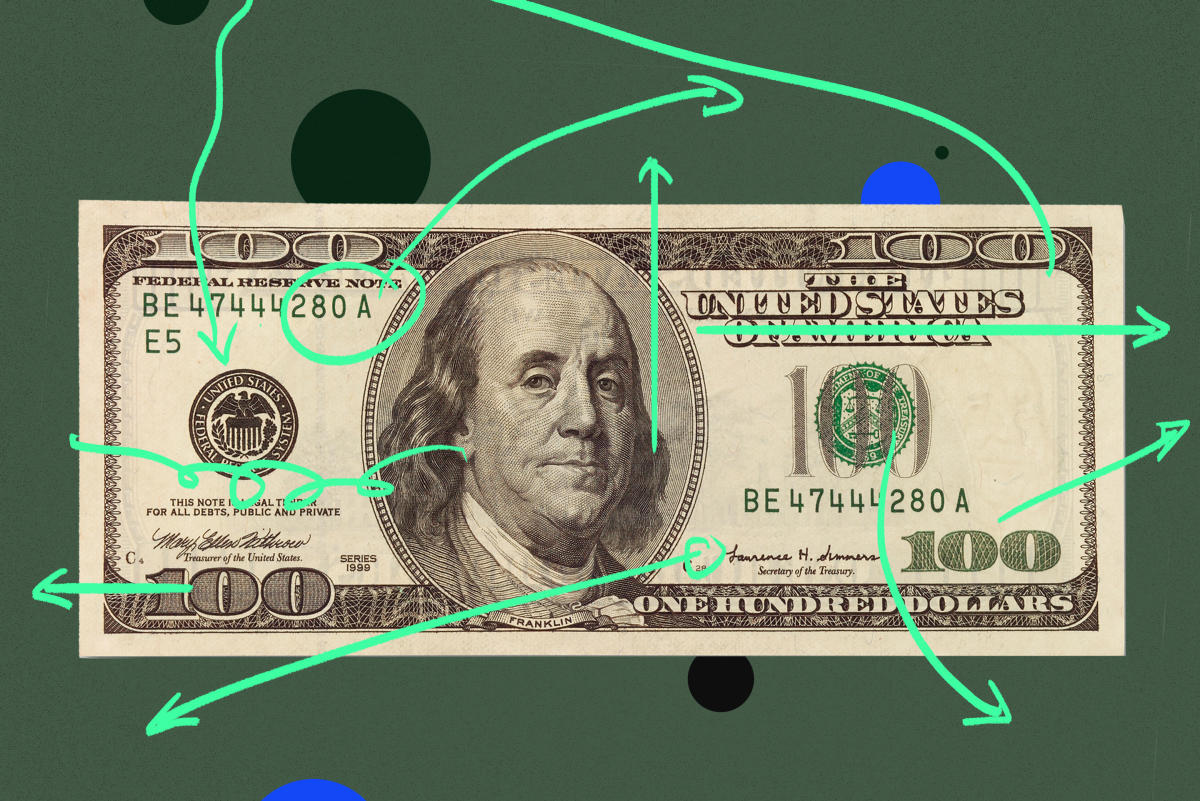Personal Finance
The 3 Best Money Moves to Make This April

Now that April is here, many Americans will have to face one of the biggest (and most dreaded) financial chores of the year: taxes.
For this month’s installment of Money Moves, we’ll cover what you need to know for Tax Day, of course, as well as a few last-minute methods to reduce your taxable income. We’ll also give you the rundown on inflation-fighting I bonds before their historically high interest rates change.
Here’s your checklist for the month.
1. Reduce your taxable income with last-minute HSA and IRA contributions
Before Tax Day on April 18, you have a window of opportunity to potentially deduct thousands of dollars from your taxable income and boost your savings for health expenses and retirement. A true win-win.
Contributions to both individual retirement accounts (IRAs) and health savings accounts (HSAs) allow you to reduce the amount of income the IRS taxes, ultimately lowering your tax bill or increasing your tax refund. You can do that — right now in 2023 — and those contributions can still be applied to your 2022 taxes.
There are limits, however. For IRAs, the 2022 contribution limit is $6,000 for individual filers and $7,000 for those 50 or older, the IRS says. In 2022, HSAs have a $3,650 contribution limit for individuals under 55. Folks 55 and older can contribute an extra $1,000. There’s also a separate $7,300 HSA contribution limit for families.
Money staff reporter Mary Ellen Cagnassola reports that there are further restrictions on how much you can deduct for IRA contributions if you or a spouse happen to have an employer sponsored retirement account like a 401(k). For example, single filers under 50 with a 401(k) can only deduct the full $6,000 if their modified adjusted gross income is $68,000 or less.
Keep in mind that contributions to Roth IRAs are not tax deductible, and IRA contribution limits are a combined total across all accounts. For example, if you had a Roth IRA and a traditional IRA, you could put, say, $2,000 into one and $4,000 into the other — but not $6,000 each.
2. File your taxes by April 18 (and expect a smaller refund)
Tax Day is almost here. Just like last year, taxes are due on April 18 for most people. Typically, federal taxes are due on April 15, but that date falls on a weekend this year. And Monday, April 17, happens to be Emancipation Day, a holiday observed in Washington, D.C., pushing the official tax deadline to Tuesday, April 18.
That doesn’t mean, however, that you should use those extra few days to procrastinate.
As we’ve been saying since tax season started, filing ASAP has its benefits. For starters, the earlier you file, the earlier you get a refund (if you’re expecting one). The IRS generally pays out refunds within 21 days of receiving a return. And if you end up owing the Tax Man this year, filing your taxes before the deadline gives you time to come up with the payment. In other words, you can file your taxes and calculate what you owe ahead of the deadline, but your tax bill won’t be due till April 18.
To take the hassle out of this tax season, follow Money’s guide to filing your 2022 taxes, and know that millions of folks can file for free through the IRS Free File program. Several tax software companies offer free versions as well (just beware of the upsell). For particularly complicated tax situations, it’s best to hire a tax pro, which is all the more reason to get started early so you can book an appointment while they’re still available.
Here’s some quick good news/bad news about tax refunds this year. The good news: The IRS is paying them out much faster than last year, when the agency was plagued by delays and a massive backlog of returns. The bad news: Tax refunds are about 10% smaller than last year. (Here’s why).
Tax Day is in a couple of weeks. Why wait to file?
April 18, 2023
File your state and federal taxes with the help of a Tax Preparation Software by clicking above.
File Your Taxes
3. Consider buying I bonds before rates change
The annualized interest rate for inflation-fighting savings bonds (aka I bonds) sits at 6.89% — historically high yet lower than last year’s all-time-high of 9.62%. Come May 1, the rate, which is tied directly to inflation, could drop yet again as consumer price growth abates. The last day to purchase I bonds at their current rate is April 30.
Last year, financial experts were recommending the government savings bonds without a second thought. Now that they have a lower rate, I bonds have some competition.
As interest rates rise for certificates of deposit (CDs) and high-yield savings accounts, they are starting to give I bonds a run for their money. Though the rates on those products are typically lower than I bonds (for now), they both have more flexible options for withdrawing your money, whereas you won’t be able to cash out your I bonds for at least one year (emergency notwithstanding).
Here are some other factors about I bonds to consider:
Pros
-
6.89% annualized interest rate
-
Designed to protect savings from inflation
-
Tax deferred interest
-
Interest exempt from state and local taxes
-
Exempt from federal taxes if used toward higher education expenses
-
Fairly liquid investment
-
30-year maturity
-
Backed by full faith of U.S. government
Cons
-
Limited potential for real earnings
-
Annual purchase limit of $15,000 per individual, $5,000 of which is only purchasable with your tax refund
-
Can not be cashed out within one year (emergency notwithstanding)
-
Three month interest penalty for cashing out within five years
-
Not as liquid as a regular savings account
Still, even with those caveats, experts say it’s hard to beat I bonds at their own inflation-hedging game, and they remain an attractive long-term option for savers and investors worried about inflation eating away at their money.
“Having that inflation protection is a good thing for conservative investors,” Randall Watsek, a financial advisor at Raymond James, recently told Money.
Another reason why you should mull over I bonds now: The only way to purchase paper I bonds these days — and reach the $15,000 annual purchase limit for individuals — is with your tax refund money. You can only purchase up to $10,000 a year of digital I bonds. For paper I bonds, you can elect to use up to $5,000 worth of your tax refund on the IRS form 8888 at the time of filing your federal return.
If you’re not worried about maxing out your purchase limit, you can also use your refund to buy digital I bonds with that same form.
Note that an online TreasuryDirect account is required to buy digital bonds — whether that’s directly through the site or with form 8888. You do not need an online account with the Department of the Treasury to buy paper I bonds.
One last hack: Paper I bonds can be converted into digital I bonds for free without affecting your annual purchase limit (and while maintaining their interest rate). Converting them means you won’t have to worry about storing and protecting the paper bonds, and it also allows you to essentially sidestep the $10,000 digital bond limit. (Digital I bonds, however, can never be converted to paper versions.)
Dollar Scholar
Still learning the basics of personal finance? Let us teach you the major money lessons you NEED to know. Get useful tips, expert advice and cute animals in your inbox every week.
Sign Up
Let TurboTax handle your taxes this year
File Today
More from Money:
Here’s When Small Tax Refunds Are Actually a Good Thing
Here’s How to Track Your Tax Refund
Why Some Social Security Beneficiaries Are Getting Two Checks in March (and None in April)
© Copyright 2023 Money Group, LLC. All Rights Reserved.
This article originally appeared on Money.com and may contain affiliate links for which Money receives compensation. Opinions expressed in this article are the author’s alone, not those of a third-party entity, and have not been reviewed, approved, or otherwise endorsed. Offers may be subject to change without notice. For more information, read Money’s full disclaimer.
Read the full article here

-

 Side Hustles5 days ago
Side Hustles5 days agoKickstart Your Year With These Entrepreneurial Health Checkups
-

 Side Hustles4 days ago
Side Hustles4 days agoExpand Your Global Reach with Access to More Than 150 Languages for Life
-

 Side Hustles3 days ago
Side Hustles3 days agoKFC Announces Saucy, a Chicken Tenders-Focused Spinoff
-

 Investing3 days ago
Investing3 days agoPalantir, Anduril join forces with tech groups to bid for Pentagon contracts, FT reports By Reuters
-

 Side Hustles2 days ago
Side Hustles2 days ago4 Ways Content Can Make or Break the Customer Experience
-

 Side Hustles4 days ago
Side Hustles4 days agoThis AI is the Key to Unlocking Explosive Sales Growth in 2025
-

 Passive Income6 days ago
Passive Income6 days ago5 Key Success Factors of Thriving Entrepreneurs
-

 Passive Income5 days ago
Passive Income5 days agoHow to Motivate, Inspire and Energize Your Employees


















